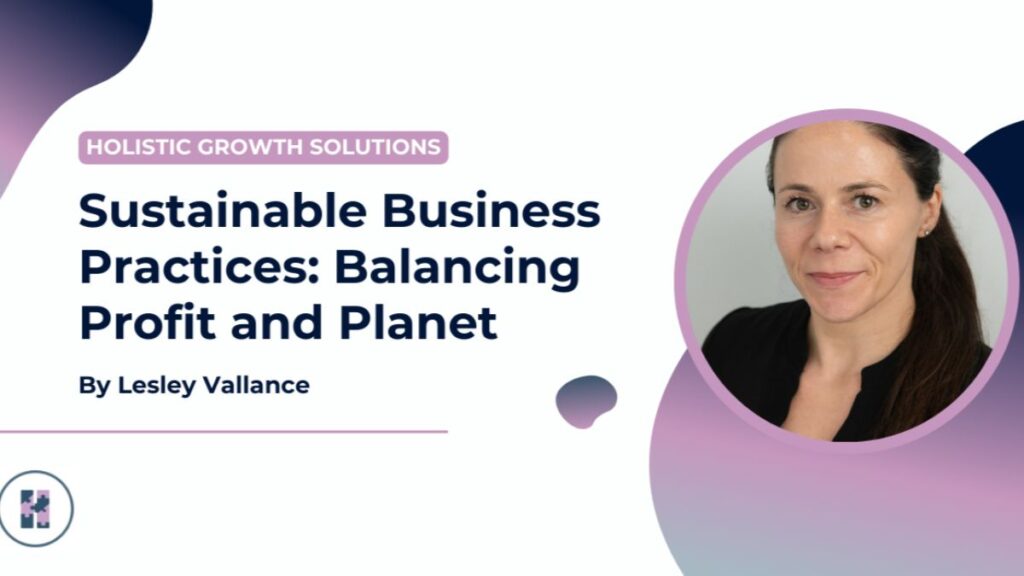In recent years, the discourse surrounding sustainable business practices has gained unprecedented momentum. The need for companies to consider not only their profit margins but also their environmental and social impact has become paramount. Businesses are increasingly recognizing that long-term success hinges on their ability to harmonize profit with ecological sustainability. This article delves into the multifaceted world of sustainable business practices, emphasizing the importance of balancing profit and planet for businesses aiming to thrive in today’s conscientious market.
Understanding Sustainable Business Practices
Sustainable business practices encompass a wide range of strategies aimed at reducing negative environmental impacts while simultaneously fostering economic growth. At its core, sustainability involves meeting present needs without compromising the ability of future generations to meet their own. This principle applies to businesses that must navigate the complexities of environmental responsibility, social equity, and economic viability. For companies, adopting sustainable practices often involves reassessing supply chains, investing in renewable energy, and implementing waste reduction initiatives.
Businesses today are under increasing pressure from consumers, investors, and regulatory bodies to adopt sustainability as a core component of their operations. As environmental concerns escalate, organizations are urged to reconsider their impact on the planet and society. This transition is not merely about compliance or responding to market demands; it is about integrating sustainability into the very fabric of business strategy. The challenge lies in how to effectively balance profit generation with the imperative of environmental stewardship.
The Business Case for Sustainability
Incorporating sustainable practices into business operations can lead to significant benefits. First and foremost, it can enhance a company’s brand image. Consumers are more informed than ever about the ethical practices of the brands they support. A commitment to sustainability can attract a loyal customer base willing to pay a premium for products and services that align with their values.
Furthermore, sustainable practices can drive operational efficiencies. For instance, companies that implement energy-saving measures can reduce utility costs significantly. Similarly, adopting a circular economy model—where waste is minimized, and products are reused or recycled—can lead to substantial cost savings over time. Research indicates that businesses focusing on sustainability often outperform their competitors financially. A study by the Harvard Business School found that companies with robust sustainability programs tend to enjoy higher profitability and stock performance.
Investors are also increasingly interested in sustainability. The rise of Environmental, Social, and Governance (ESG) criteria means that businesses with strong sustainability practices are more likely to attract investment. Institutional investors are beginning to prioritize companies that are committed to reducing their environmental footprint, indicating a shift in how financial performance is evaluated.
The Role of Stakeholders
Balancing profit and planet requires collaboration among various stakeholders, including employees, customers, suppliers, and investors. Each group plays a vital role in driving sustainability initiatives forward.
Employees are often the backbone of sustainability efforts within organizations. Engaged and informed employees can contribute significantly to a company’s sustainability goals, whether through innovative ideas, participation in green programs, or changes in everyday practices. Businesses that foster a culture of sustainability tend to see higher employee satisfaction and retention, leading to a more committed workforce.
Customers are increasingly demanding transparency and accountability from the brands they support. Companies that communicate their sustainability efforts effectively are more likely to build trust and loyalty among consumers. Brands that prioritize sustainable practices not only meet customer expectations but also differentiate themselves in a crowded marketplace.
Suppliers also play a critical role in sustainable business practices. Companies need to engage with their supply chains to ensure that their partners adhere to similar environmental and social standards. This might involve conducting audits, providing training, and setting clear sustainability expectations. Establishing a sustainable supply chain is essential for minimizing environmental impacts and enhancing overall business resilience.
Finally, investors are pushing companies to adopt sustainable practices as they recognize the long-term financial risks associated with environmental degradation and social inequality. Investors are increasingly scrutinizing companies for their ESG performance, which means that organizations need to align their strategies with sustainability goals to attract investment and maintain shareholder confidence.
Challenges in Implementing Sustainable Practices
Despite the clear benefits, many businesses face challenges in implementing sustainable practices. One major hurdle is the perceived trade-off between profitability and sustainability. Some organizations fear that investing in sustainable initiatives will reduce short-term profits, creating resistance to change. This mindset can be detrimental, as neglecting sustainability can lead to long-term financial consequences, including regulatory fines, reputational damage, and loss of market share.
Another challenge is the complexity of measuring sustainability performance. Unlike financial metrics, which are relatively straightforward, sustainability metrics can be difficult to quantify. Businesses often struggle to track their environmental impact, employee engagement in sustainability initiatives, or the social benefits of their programs. This lack of measurable data can make it challenging to justify investments in sustainability to stakeholders.
Additionally, smaller businesses may lack the resources and expertise to implement comprehensive sustainability programs. They may struggle with limited budgets or lack access to information and best practices. However, there are numerous resources available, including government incentives, industry associations, and sustainability consultants, that can support small businesses in their sustainability journey.
Best Practices for Balancing Profit and Planet
To successfully balance profit and planet, businesses can adopt several best practices that align their operations with sustainable principles:
- Conduct a Sustainability Audit: Companies should begin by assessing their current practices to identify areas for improvement. This includes evaluating energy use, waste management, supply chain practices, and overall environmental impact. A comprehensive audit can provide insights into where resources are being wasted and where improvements can be made.
- Set Clear Goals: Establishing measurable sustainability goals is crucial for tracking progress and maintaining accountability. Companies should set specific, achievable targets related to reducing carbon emissions, increasing energy efficiency, or improving waste management practices.
- Engage Stakeholders: Involving employees, customers, suppliers, and investors in sustainability initiatives can foster a culture of shared responsibility. Regular communication about sustainability goals and progress can help build trust and collaboration among stakeholders.
- Invest in Renewable Energy: Transitioning to renewable energy sources, such as solar or wind power, can significantly reduce a company’s carbon footprint. Businesses should evaluate their energy needs and explore options for integrating renewable energy into their operations.
- Implement a Circular Economy Model: Shifting towards a circular economy can minimize waste and promote resource efficiency. Companies should explore ways to redesign products for reuse or recycling and implement take-back programs to encourage responsible disposal.
- Report Transparently: Transparency is key to building trust with stakeholders. Companies should publicly report their sustainability efforts and progress towards goals. This not only holds the organization accountable but also demonstrates commitment to sustainability.
The Future of Sustainable Business Practices
As the world grapples with pressing environmental challenges, the future of business will increasingly hinge on the ability to balance profit with planet. Companies that embrace sustainability as a core tenet of their operations will not only enhance their reputation but also position themselves for long-term success in a rapidly changing marketplace.
The trend toward sustainable business practices is not merely a passing phase; it is a fundamental shift in how businesses operate. With consumers and investors alike prioritizing sustainability, companies must adapt to remain competitive. This evolution will require innovation, collaboration, and a steadfast commitment to reducing environmental impacts while fostering economic growth.
In conclusion, sustainable business practices represent a critical pathway to achieving a balance between profit and planet. By embracing sustainability, businesses can create value for themselves, their stakeholders, and the planet. As this trend continues to evolve, the most successful companies will be those that recognize that their future depends on their ability to thrive in harmony with the environment. In doing so, they will not only contribute to a healthier planet but also unlock new opportunities for growth and innovation in the process.






